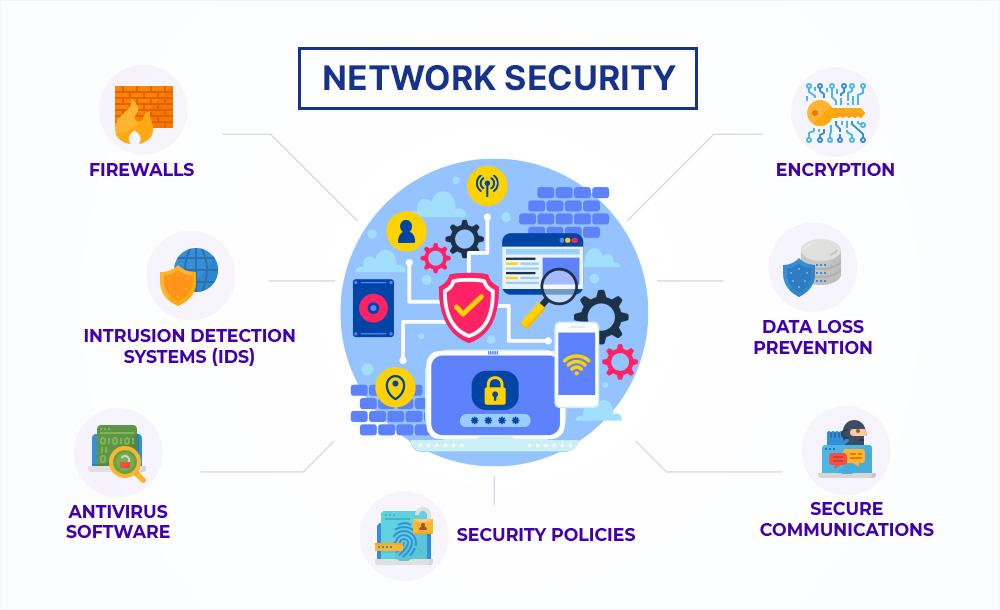In a digital landscape fraught with malicious actors and cyber threats, the latest report from Cloudflare shines a light on the alarming reality of DDoS attacks. With a staggering 4.2 Tbps of bad packets detected in Q3 alone, the data highlights the ever-evolving tactics of cybercriminals and the pressing need for heightened vigilance in the realm of cybersecurity. Join us as we delve into the key findings of Cloudflare’s Q3 DDoS report and uncover the implications of this widespread threat in today’s interconnected world.
Table of Contents
- Overview of the DDoS Attack Landscape
- Analysis of the 4.2 Tbps attack and its implications
- Key takeaways for network security professionals
- Recommendations for mitigating DDoS attacks with Cloudflare
- Q&A
- To Conclude

Overview of the DDoS Attack Landscape
The latest DDoS report from Cloudflare reveals some alarming statistics about the current landscape of cyber attacks. In the third quarter of the year, the company mitigated a massive 4.2 Tbps of bad packets, highlighting the increasing threat posed by malicious actors. These attacks targeted a wide range of industries, including finance, gaming, and e-commerce, demonstrating the need for robust cybersecurity measures.
Aside from the sheer volume of attacks, Cloudflare’s report also delves into the evolving tactics used by cybercriminals. From sophisticated botnets to amplification techniques, attackers are constantly finding new ways to disrupt online services. Organizations must stay vigilant and implement comprehensive DDoS protection strategies to safeguard their networks and maintain business continuity in the face of these ongoing threats.

Analysis of the 4.2 Tbps attack and its implications
Cloudflare’s latest report on DDoS attacks revealed a staggering 4.2 Tbps attack, setting a new record for the largest ever seen. This massive volume of bad packets flooded the network, causing widespread disruption and highlighting the increasing sophistication of cyber threats.
The implications of this attack are far-reaching, underscoring the urgent need for robust cybersecurity measures. With the rise of IoT devices and the proliferation of botnets, organizations must prioritize DDoS protection to safeguard their networks from potential downtime and data breaches. As cybercriminals continue to evolve their tactics, proactive defense strategies and real-time monitoring are essential to mitigate the risks posed by such large-scale attacks.

Key takeaways for network security professionals
Cloudflare’s Q3 DDoS report revealed some eye-opening statistics for network security professionals to consider. One of the most alarming figures was the staggering 4.2 Tbps of bad packets detected during the third quarter. This serves as a stark reminder of the ongoing threat posed by distributed denial of service attacks, highlighting the importance of robust security measures to protect against such malicious activity.
Additionally, the report highlighted the increasing sophistication of cyber attacks, with attackers utilizing a diverse range of techniques to target networks. Network security professionals must stay vigilant and adapt their defenses to keep pace with evolving threat landscapes. Implementing a multi-layered security strategy that includes advanced detection and mitigation capabilities is crucial in safeguarding against DDoS attacks and other malicious activities.

Recommendations for mitigating DDoS attacks with Cloudflare
When it comes to mitigating DDoS attacks with Cloudflare, there are several recommendations that can help protect your website from the ever-growing threat of malicious traffic. One key strategy is to utilize Cloudflare’s robust network of data centers located around the world to distribute and absorb attack traffic, ensuring that your website stays online even during large-scale attacks. Additionally, implementing rate limiting rules within Cloudflare can help to block suspicious traffic before it even reaches your origin server, further minimizing the impact of potential DDoS attacks.
Another important recommendation is to regularly monitor and analyze your website’s traffic patterns using Cloudflare’s analytics tools. By keeping a close eye on incoming traffic, you can proactively detect and respond to any unusual spikes or patterns that may indicate a potential DDoS attack. Additionally, staying up to date on the latest security best practices and leveraging Cloudflare’s advanced security features, such as Web Application Firewall (WAF) and Bot Management, can further enhance your website’s defenses against DDoS attacks.
Q&A
Q: What is the significance of Cloudflare’s Q3 DDoS report?
A: Cloudflare’s Q3 DDoS report details the current landscape of distributed denial-of-service (DDoS) attacks, shedding light on the increasing threat to online security.
Q: How much malicious traffic did Cloudflare mitigate in the third quarter?
A: Cloudflare mitigated an astounding 4.2 Tbps of DDoS traffic in Q3, highlighting the scale of attacks that organizations are facing.
Q: What are some key takeaways from the report?
A: Some key takeaways from the report include the rise of small and medium-sized attacks, the prevalence of UDP-based amplification attacks, and the need for organizations to have robust DDoS protection in place.
Q: How can businesses protect themselves from DDoS attacks?
A: Businesses can protect themselves from DDoS attacks by implementing DDoS protection services, such as those offered by Cloudflare, and by regularly updating their security measures to stay ahead of evolving threats.
Q: What does the future of DDoS attacks look like, based on the findings of the report?
A: The future of DDoS attacks looks increasingly complex and sophisticated, with attackers constantly adapting their tactics to bypass defenses. Organizations must remain vigilant and proactive in their approach to cybersecurity to mitigate the risks posed by DDoS attacks.
To Conclude
As we navigate the ever-evolving landscape of cybersecurity threats, Cloudflare’s Q3 DDoS report serves as a stark reminder of the digital dangers lurking just beyond our screens. With 4.2 Tbps of bad packets and a myriad of other malicious activities on the rise, it is more crucial than ever for organizations to remain vigilant and proactive in safeguarding their online presence. By staying informed and prepared, we can work towards a safer and more secure digital future for all.










